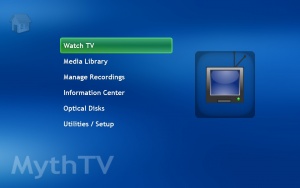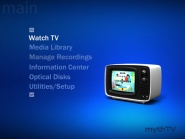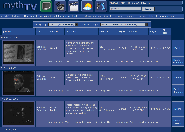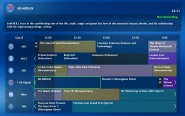MythTV
(Difference between revisions)
(→OCAU member configurations and setups) |
(→OCAU member configurations and setups) |
||
| Line 466: | Line 466: | ||
** Intel Pentium D 820 2.8 Ghz Dual Core | ** Intel Pentium D 820 2.8 Ghz Dual Core | ||
** 512MB ECC DDR2 (256MB pc4300 standard and one 256MB pc3200, needs the initial release BIOS for pc3200 support) | ** 512MB ECC DDR2 (256MB pc4300 standard and one 256MB pc3200, needs the initial release BIOS for pc3200 support) | ||
| − | ** Gainward 7300GT fanless | + | ** Gainward 7300GT fanless, cut the PCIe x4 slot to fit |
** USB Audio with optical output | ** USB Audio with optical output | ||
* 1TB software RAID-5 JFS volume consisting of 5 x 250GB partitions | * 1TB software RAID-5 JFS volume consisting of 5 x 250GB partitions | ||
| Line 476: | Line 476: | ||
** Dvico Fusion HDTV Lite PCI | ** Dvico Fusion HDTV Lite PCI | ||
** Twinhan VP3020 PCI | ** Twinhan VP3020 PCI | ||
| − | * Aiko 32" LCD 1366x768 | + | * Display device |
| + | ** Aiko 32" LCD 1366x768 HDMI | ||
| + | ** 30" LCD 2560x1600 (now sold, found TV is better on the much cheaper Aiko anyway) | ||
|| Yes | || Yes | ||
|| Slackware 10 | || Slackware 10 | ||
Revision as of 15:44, 24 April 2007
Contents |
Introduction
MythTV is a free and open source Personal Video Recorder (PVR) for the Linux OS. It's easily extended through a diverse range of plugins providing extra capabilities such as DVD playback, photo management and games. MythTV provides high levels of customisability and features far beyond those offered by equivalent Home Theatre PC (HTPC) applications. It utilises a unique client/server architecture allowing for flexible deployment in the home environment. The latest stable release of MythTV is 0.20.
MythTV can
- Display digital, high definition and analogue television
- Time-shift LiveTV (Pause, Rewind and fast forward)
- Schedule programme recordings from an integrated Electronic Programme Guide (EPG)
- Automatically skip commercials
- Change the appearance of the display
- Support multiple combinations of TV tuner adapters
- Be extended through plugins
MythTV can not
- Wash your undies
- Clone your cat
- Help with the development of a flux capacitor
- Be described as anything less than brilliant
Plugins
MythTV is easily extended through a variety of plugins. A complete list of official MythTV plugins with a short description of their functionality have been catalogued below.
- MythArchive (Create DVDs of your recordings)
- MythBrowser (Built in web browser)
- MythDVD (DVD/VCD playback and ripping capability)
- MythFlix (A netflix implementation for MythTV)
- MythGallery (Photo management and presentation)
- MythGame (Play games on your television)
- MythMusic (Music library management and playback)
- MythNews (Read RSS feeds on your television)
- MythPhone (Receive and make phone calls)
- MythVideo (Playback for a variety of video formats)
- MythWeather (Display weather information)
- MythWeb (Web based management and video/audio streaming)
Supported and recommended hardware
The Linux kernel and MythTV support a large variety of hardware configurations. Historically, MythTV was developed for use with analogue television. Fortunately, support for Digital Video Broadcasting (DVB) was eventually included, providing MythTV with the capability to receive digital and high definition television.
When selecting hardware for use in your MythTV computer, it's important to establish the purpose of the project. That is, do you intend to play high definition television, or standard digital? This will ultimately determine the minimum hardware requirements for your MythTV computer. Obviously, high definition playback will require a more powerful computer than that of standard digital.
Lastly, you should check to ensure that your desired hardware is compatible with Linux and MythTV. To help with this process, the following supported devices have been listed. If in doubt, consult Google or the OCAU MythTV General Discussion and Support thread.
Minimum hardware requirements
It's important to understand that this topic is largely subjective. Individuals have different expectations and experiences that ultimately affect their perception of "minimum requirements". Therefore, the author of this section encourages you to use this information as a guide only.
- Searchable PVR Hardware database
- Official MythTV documentation hardware recommendations
- MythTV & High Definition...minimum requirements
- Officail MythTV wiki - Configuring HDTV
- Information about X-Video Motion Compensation (XvMC)
| Standard digital | High definition |
|
|
Supported TV tuner adapters
The following list of TV tuner chipsets and adapters are by no means a representation of ALL supported devices. It's merely a list of devices that have been confirmed to function correctly by OCAU members. For a more comprehensive list of supported tuners, visit the LinuxTV wiki.
Commonly support chipsets
Any TV tuner adapter utilising these chipsets should be fully supported by a recent Linux kernel.
- Conexant 2388x (Recommended)
- Brooktree878 (Recommended)
- Philips SAA 7134
- B2C2 Flexcop II
Digital tuners
| Adapter | Picture(s) |
Compro VideoMate DVB-T200A
Special instructions
|
N/A |
Digitalnow DNTV Live! DVB-T
|
N/A |
DVICO (Ultraview) Fusion HDTV DVB-T Plus
|
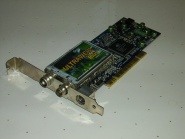 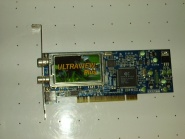
|
DVICO (Ultraview) Fusion HDTV DVB-T Lite
|
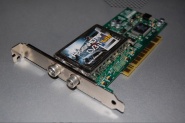
|
Technisat Airstar 2 DVB-T
|
N/A |
Twinhan DVB-T
|
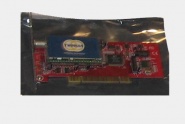
|
VisionPlus DVB-T (Twinhan clone)
Special instructions
|
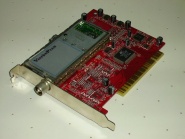 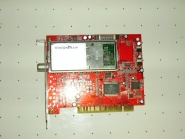
|
V-Stream XPERT DVT-DVB-T
|
N/A |
Leadtek DTV-1000T
|
N/A |
Hybrid tuners
| Adapter | Picture(s) |
Compro VideoMate DVB-T300
Special Instructions:
|
N/A |
Unsupported tuners
| Adapter | Details |
| DViCO FusionHDTV DVB-T Dual Digital 4 | A relatively new device, it utilises the Zarlink ZL10353 chipset. Unlike its predecessors, this chipset is currently unsupported. Fortunately, driver development is active. Until a mature driver has been produced, it's recommended to stick with an adapter based on either bt878 or cx2388x. |
Supported remote controls
MythTV supports any input device that can be configured with the Linux OS. This allows for a large selection of potential remote controls, wireless keyboards and any other input device you can conceive. People commonly associate remote controls with their televisions and HTPC's. As a result, this section provides information on supported Linux Infra-red Control (LIRC) devices. For a complete list of supported devices, you may like to look here.
| Remote Control | Picture(s) |
Microsoft Windows MCE IR remote control (Version 2)
|
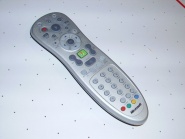 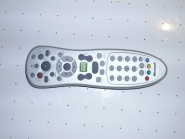
|
DViCO FusionHDTV IR Remote + USB Receiver
|
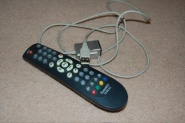
|
Recommended Software
MythTV is an application that sits on top of a Linux distribution. Consequently, it's irrelevant which distribution you decide to use in your MythTV configuration. What's important is that you have the required package dependencies, and access to support. Distributions such as Ubuntu and Arch include MythTV in their package repositories which automatically resolve dependencies, simplifying the install process.
When choosing your Linux distribution, the author of this wiki article encourages you to pick a distribution that you're familiar with. Familiarity leads to confidence which is of benefit in a first-time install process. If you don't favour any particular distribution, pick a one that has a wide range of support. As a general rule of thumb, popular distributions are your best bet. They usually offer multiple places for seeking help such as forums, IRC and a mailing list. If you'd like assistance from other OCAU members, you may be interested in the MythTV General Discussion and Support thread on the OCAU forums.
Lastly, there are special, customised distributions that are designed specifically for MythTV. They present considerable advantages for users with little or no Linux experience by including automated installers and support for proprietary drivers. They're often considered "out of the box" solutions.
Linux Distributions
| Distribution | MythTV installation guides | Support |
| Arch Linux | ||
| Fedora Linux | ||
| Gentoo Linux | ||
| Ubuntu Linux |
MythTV distributions
Distributions listed in alphabetical order.
- KnoppMyth is my attempt at making the Linux and MythTV installation as trivial as possible.
MythDora (Recommended)
- MythDora is a Fedora Core and MythTV "All-In-One" DVD. The DVD will load a preconfigured Fedora Core installation on your computer as well as install and configure MythTV.
Electronic programme guide (EPG)
MythTV uses XMLTV to store and display programme data in the Electronic Programme Guide (EPG). Programme data is populated into the MythTV database through the use of a XMLTV grabber, such as the tv_grab_au script. In Australia, there are several XMLTV grabbers which provide varying levels of programme data. The legality of some grabbers are disputed.
Australian XMLTV grabbers
Shepherd (Recommended)
Shepherd provides reliable, high-quality guide data for Australian free-to-air TV and Pay TV channels by employing a flock of independent grabbers and data sources. In addition, Shepherd provides HDTV programme data, as well as the capability to automatically configure TV network icons. It's the de facto choice of OCAU MythTV users, and recommended by the author of this wiki article.
IceTV
IceTV is a commercial entity that provides pre-compiled programme data for subscribers. Subscription can be purchased for approximately $13/month.
OzTivo
OzTivo is a community maintained television guide that provides pre-compiled programme data in the XMLTV and TiVo slice formats. The Guide relies on a community of users to create and upload guide data to the Guide's database. The database is then hand-edited via a web interface to correct any mistakes.
ltd73 (tv_grab_au)
Prior to Shepherd, Ltd73's tv_grab_au script provides verbose and accurate programme data from the Yahoo7 web site. This script is now deprecated, and Australian MythTV users are encouraged to use it's successor, Shepherd.
Australian television network icons
MythTV provides users with the ability to define icons for individual TV channels. You're able to set these automatically with software such as Shepherd, or manually by configuring icons via mythtv-setup. There are numerous free-to-air icon schemes available from a variety sources. Some OCAU members have created useful TV network icon resources.
MythTV supports amongst other formats, JPEG and transparent PNG images. Unfortunately, it does not support SVG.
Getting icons
There are four OCAU-centric locations that you can get TV network icons.
- Australian TV Network Logos
Has a number of TV network icon schemes (mostly scalable versions of the schemes below.) Also has a master SVG template for editing your own icons. - Shepherd
Automated channel icon schemes. - MythTV
Dedges's cartoonish blue and grey icons. - FrogBoy's icon set
A tar archive with FrogBoy's icon scheme.
Configuring icons via mythtv-setup
- Run mythtv-setup, from either a terminal window or a run dialog.
- Go to 5. Channel Editor.
- Select the channel you wish to add an icon to.
Note, you will need to press enter after you select the channel name. Double clicking seems to have been disabled for some reason. - Enter the path to a supported graphic file in the Icon: field.
Tips, tricks and common problem fixes
Tips and tricks
For a comprehensive list of MythTV tips and tricks, you may like to visit the Myth(TV)ology web site for additional information.
Common problem fixes
No sound on Channel Seven or SBS
Symptoms: No sound occurs on channel Seven or SBS (In Australia, they have ac3 audio streams) when they are tuned to from another channel (i.e. You are watching channel nine, and change to channel Seven). There is however sound if you choose channel Seven, exit live TV mode and then re-enter live TV.
Fix: It appears there can be weird problems like this when using PS format to watch TV. It can be fixed by:
- Exit mythfrontend and mythbackend
- Enter mythtv-setup
- Go to card options
- Select your DVB card
- Go to 'Advanced Settings'
- Select 'Recording Options'
- Check the box that says 'Record in TS format instead of PS'
- Exit mythtv-setup, and restart mythbackend and mythfrontend
No display when watching LiveTV
Symptoms: When trying to watch LiveTV the screen is blank and no input is accepted, after a few moments will drop back to main menu.
Fix:
- Stop mythbackend
- Run mythtv-setup
- Select Option 4. Input Connections
- Add a starting channel (ie. 7)
- Close myth-setup, restart mythbackend and test
Support and additional information
The purpose of this wiki article is to provide OCAU and Australian MythTV users with relevant and up-to-date information on MythTV. OCAU members are encouraged to contribute to this article wherever possible. In the event that you notice incorrect or outdated information that you're unable to rectify by yourself, please feel free to contact either Dedge or Techtoucian. For MythTV general discussion and support, please visit this thread.
Informative and helpful links
Some useful links have been compiled into a list below. If in doubt, Google is a fantastic resource of information.
Official documentation
Complementary information
OCAU forum threads
OCAU member configurations and setups
The following table compromises of MythTV configurations by various OCAU members. It provides [potential] MythTV users with an opportunity to view what configurations other OCAU members are utilising. In addition, it may help to determine what hardware is necessary for either standard digital or high definition content. For fun, OCAU members may include pictures of their setups. If you're an OCAU member and would like to include your configuration in this table, click here for more information.
| OCAU username |
Configuration | HDTV capable |
OS/Distribution | Picture(s) |
| cleary |
|
Yes | sidux Chaos (2007-01) | 
|
| Dedge |
|
Yes | Ubuntu 7.04 |  
|
| FrogBoy |
|
No - Not Enough Grunt | Debian Sarge | |
| Jimboberella |
|
Yes | Ubuntu 7.04 | |
| Pingers |
|
Yes | Ubuntu 7.04 | |
| Stik79 |
|
Yes/Yes (with XvMC) | FC6/FC6 |  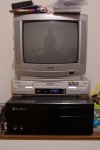
|
| Techtoucian |
|
Yes | Ubuntu 6.10 | |
| Thrawn |
|
Yes | Slackware 10 |
How to contribute
OCAU members are encouraged to include their configurations in this wiki article. Please include your hardware specifications, television display, HDTV capability (I.e. are you able to smoothly display high definition content?), OS/Distribution; and any relevant pictures. In an attempt to reduce clutter, please limit your entry to a maximum of two pictures with respective thumbnails. If you're unsure where to start, copy an existing entry. Note: Please keep entries in alphabetical order by OCAU username.
ToDo (Please contribute!)
This is a small list items that are either unfinished, or require implementation. If you're unable to contribute but would like to, please contact either Dedge or Techtoucian.
Seeking additional information on specific topics
As it currently stands, information in this wiki article has been compiled by Dedge, Techtoucian and the previous wiki article. If you're successfully using a TV tuner or remote control that is not currently listed, please add it.
We're seeking additional resources for the following sections. Please ensure they're current.
- Linux distributions
- MythTV distirbutions
- Tips, tricks and common problem fixes
- Informative and helpful links
Dvico Fusion HDTV Remote
- Update kernel modules required for Dvico Fusion HDTV remote (Cleary) - Please see the discussion page for more information.
Images requested for TV tuners
Several TV tuners listed in this wiki article do not have respective images. We're unable to use images from other web sites due to copyright law. Therefore, if you have a TV tuner listed in this wiki article without an image, please take a photo, upload it, and add it to this wiki article.
OCAU member configurations requested
Please add your MythTV configuration to the "OCAU member configurations and setups" section of this wiki.
![[Main Page]](http://www.overclockers.com.au/wiki/skins/common/images/wiki.png)
